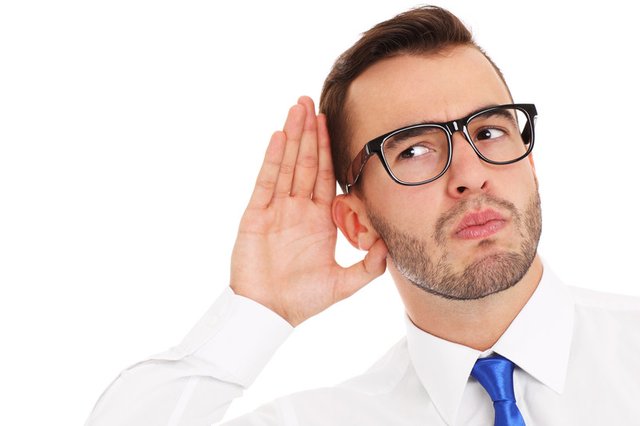Good Communication Starts With Listening

Source: Mediate
Many of us think that communication is talking - and talk we do. We interrupt, advise, reassure, judge, analyze, criticize, argue, moralize, threaten, divert, diagnose, etc., etc. But, good communication requires good listening as well as talking. In fact, since we have two ears and only one mouth, listening just might be the more important skill. However, we receive almost no training in good listening and usually do not realize that really "hearing" someone is not a passive activity.
When you are speaking and someone is not paying attention, how do you feel? Annoyed, frustrated, discounted, rejected, anxious or angry? Such feelings usually make communication more difficult. So how can we show someone who is speaking that we really are paying attention to them? We can do this both nonverbally and verbally.
Research shows that about 85% of what we communicate is nonverbal. This includes our posture, physical movements, eye contact and our psychological presence. So, when someone is speaking to you, is your posture inclined toward the speaker, so as to invite and encourage expression? Or is your back turned or your arms or legs tightly crossed, which discourages and cuts off involvement? Are you fidgeting or otherwise distracting the speaker or yourself? Are you making good eye contact with the person? By looking at and observing the speaker, not only will the speaker feel "attended" to, you will learn more about what is really important to him or her. Finally, we cannot pretend to pay attention by employing these physical techniques without also being psychologically present. We can’t fake interest. The speaker will know if our hearts and minds are not really there.
Verbal ways of showing that we are paying attention include 1) an open invitation to talk, 2) using one or two words to encourage talking to continue, 3) asking open-ended questions and 4) knowing when to be silent. For example, "You look like something is bothering you. Do you want to talk about it?" describes a person’s body language followed by an open invitation to talk. It is important to silently allow the person time to decide whether to talk and what to talk about. If someone chooses not to accept the invitation, don’t try to force them. Back off and respect their privacy.
Brief responses to encourage continued talking include "mm-hmmm," "I see," "Oh?" "Right," "And?" "Go on," "Tell me more," etc. These don’t imply either agreement or disagreement. They simply mean "Yes, I hear you - please go on."
A good listener uses questions sparingly because questions tend to focus the conversation on the questioner’s perspective and concerns and can derail the focus of the speaker. Work on asking fewer questions, and when you do, ask "open-ended" questions. Compare "Did you call the police?" to "What did you do?" Or, "Do you feel anxious about the meeting tomorrow?" to "How do you feel about the meeting tomorrow?" An open-ended question is like an essay question which allows the speaker, rather than the questioner, to lead the conversation and clarify his or her own concerns. A closed question is like a true/false question and often suggests or narrows the agenda.
Finally, knowing when to be silent can be a powerful communication tool. Silence allows the speaker to become aware of his or her own feelings, to explore more deeply and to proceed at his or her own pace. Because many listeners become self-conscious with silence, they feel the need to "break" it by talking or asking questions. Unfortunately, this usually disrupts and derails the speaker. How can silence be handled? Pay attention to the body posture of the speaker and "listen" to what it says to you. Try to imagine what the speaker might be feeling, consider various ways that you might respond, and then choose the most helpful response.
Congratulations @wellwisher99! You received a personal award!
You can view your badges on your Steem Board and compare to others on the Steem Ranking
Do not miss the last post from @steemitboard:
Vote for @Steemitboard as a witness to get one more award and increased upvotes!